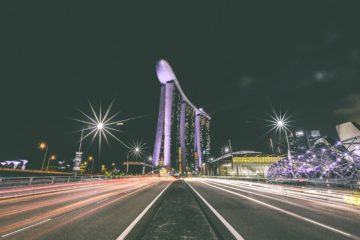
Just four days before the 70th anniversary of the Republic of India, the Supreme Court has served a grim reminder. The battle to reclaim the republic will need to be fought by the general public .
The much-awaited hearing of petitions opposing the Citizenship (Amendment) Act, or CAA, clothed to be a routine affair with little consequence, even as many legal experts had feared. Attorney General K.K. Venugopal pleaded for longer to reply to 143 petitions. The court gave the Narendra Modi government another four weeks. The petitioners asked for a stay the operation of the CAA and therefore the National Population Register (NPR), or a minimum of their postponement by a couple of months. The Supreme Court showed its unwillingness to currently engage with this issue.
To be sure, there’s nothing wrong with the Supreme writ intrinsically . The court limited itself to procedural issues and passed an order that didn’t pre-judge the matter. This issue does deserve a constitutional bench, to which the court has indicated it’s going to refer the anti-CAA hearings. The Modi government did need time to reply to quite 140 petitions. The plea for a stay the CAA and therefore the NPR wasn’t turned down, just postponed to subsequent hearing. And it had been only logical to ask the high courts to not hear the petitions while the Supreme Court was seized of the matter.
Ignoring citizens’ fears
But this is often no ordinary matter. The legal battle over the CAA is about protecting the letter, the spirit and therefore the very soul of the Indian Constitution. i’m no lawyer. But as a student of politics who studied the Indian Constitution, i might have imagined that the CAA is an open-and-shut case of brazen violation of everything that the Indian Constitution stands for. If so, i might have expected the Supreme Court to require a special approach.
I would not expect or maybe wish the judiciary to reply to the huge anti-CAA movement everywhere India. But, is it unfair to expect the judges to seek out how to deal with the fear that the CAA has generated within the minds of crores of Indians at the country’s social and geographic margins? The hearing-as-usual approach is unlikely to inspire confidence at a time when people are desperately trying to find assurance from the constitutional order.
We must, of course, await the longer term proceedings before coming to a particular conclusion. But one lesson is becoming clear. Today’s Supreme Court isn’t the bulwark to defend the Constitution that it had been designed to be. it’s going to still occasionally offer small relief. But it doesn’t have what it might fancy defend the Constitution within the face of this aggressive Modi regime. this Supreme Court appears to be a reluctant warrior within the battle to defend the Constitution, going by recent pronouncements. Sometimes it’s hard to mention which side the honourable judges are during this battle, legal observers have said.
It’s right down to the general public
So, the principle site within the ongoing battle to reclaim the republic won’t be the courts or Parliament or any of the designated institutional spaces. The struggle will need to be taken to the streets following a democratic and non-violent path. the general public must reclaim the republic. We, the People of India, who gave to ourselves this Constitution, must come to its defence.
This is what the continued movement for equal citizenship is all about. Now that the court hearing is behind us, and an extended legal battle lies ahead, it’s a flash to take a seat back and reflect on the longer term course of this nation-wide movement. during a sense, this moment marks the completion of the primary phase of the anti-CAA-NRC-NPR movement. for many parts of India, this phase concludes with a country-wide human chain, planned by various organisations and coalitions on 30 January. Uttar Pradesh could also be an exception, because anti-CAA protests there have just resumed after a month of police clampdown on any sort of protest. it’s time now to believe the second phase of the movement.
The first phase of the movement has already accomplished what couldn’t be imagined a month ago. First of all, it’s broken the spiral of silence, especially for the Muslim community, which has spent the last six years during a state of deep anxiety. The community has found its voice and self-confidence. Second, the anti-CAA movement has achieved a huge footprint, rarely matched by the other movement. Third, it’s tapped into the spontaneity of the people, with political leaders and organisations trying to catch up with them. The participation of girls and youth may be a noteworthy achievement of lasting value. Fourth, a replacement set of leaders have emerged everywhere, often sidelining the established clergy and political leadership. Fifth, the movement has led to a unprecedented spurt in creativity, both in communication and in ground action.
It’s right down to the general public
So, the principle site within the ongoing battle to reclaim the republic won’t be the courts or Parliament or any of the designated institutional spaces. The struggle will need to be taken to the streets following a democratic and non-violent path. the general public must reclaim the republic. We, the People of India, who gave to ourselves this Constitution, must come to its defence.
This is what the continued movement for equal citizenship is all about. Now that the court hearing is behind us, and an extended legal battle lies ahead, it’s a flash to take a seat back and reflect on the longer term course of this nation-wide movement. during a sense, this moment marks the completion of the primary phase of the anti-CAA-NRC-NPR movement. for many parts of India, this phase concludes with a country-wide human chain, planned by various organisations and coalitions on 30 January. Uttar Pradesh could also be an exception, because anti-CAA protests there have just resumed after a month of police clampdown on any sort of protest. it’s time now to believe the second phase of the movement.
The first phase of the movement has already accomplished what couldn’t be imagined a month ago. First of all, it’s broken the spiral of silence, especially for the Muslim community, which has spent the last six years during a state of deep anxiety. The community has found its voice and self-confidence. Second, the anti-CAA movement has achieved a huge footprint, rarely matched by the other movement. Third, it’s tapped into the spontaneity of the people, with political leaders and organisations trying to catch up with them. The participation of girls and youth may be a noteworthy achievement of lasting value. Fourth, a replacement set of leaders have emerged everywhere, often sidelining the established clergy and political leadership. Fifth, the movement has led to a unprecedented spurt in creativity, both in communication and in ground action.
Merge, align, opened up , fight
Yet, it’s too early to celebrate. If the Modi regime has dug its heels on the CAA, it’s because the govt still hopes to get over the loss of legitimacy that it’s suffered. While its plan to paint the whole movement because the handiwork of unruly Muslim mobs has not succeeded, the very fact remains that an awesome proportion of protesters outside the northeast are Muslims. While there are very powerful rallies and demonstrations, these shows of strength are likely to evoke fear instead of empathy. While spontaneity has been the strength of the movement and there are not any signs of tiredness, the varied protests can and work at cross purposes. The three strands of the movement – protests in Assam, by the Muslim community, and of the youth – aren’t quite aligned with each other .
After 30 January, following the nation-wide human chain, the anti-CAA movement will enter the second phase. the main target of action must shift from big mobilisation in cities and enormous towns to smaller towns and villages. the main target of communication must shift from those that are already converts and people who are directly affected to the remainder of the population, mainly Hindus who don’t feel directly threatened by the new citizenship law. Special attention must tend to Dalits, Adivasis and therefore the nomadic communities that stand to lose most from the new regulations. In choosing the shape of protest, premium should be placed on Shaheen Bagh-types of protests, which may evoke empathy among the remainder of India’s population. The movement must find its own positive agenda, beyond opposing the NPR-NRC and therefore the CAA. It must connect with the widely felt economic distress. The movement for equal citizenship must also become a movement for a renewal of the thought of India.
The author is that the national president of Swaraj India. Views are personal.
This Articale taken refrence from Theprint


















